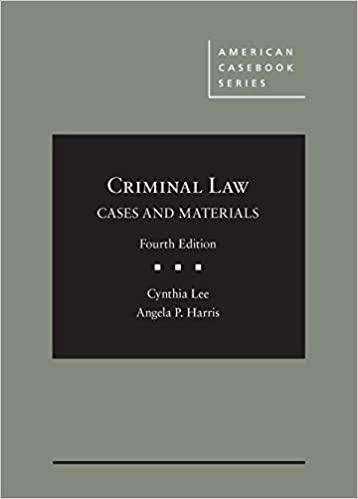Answered step by step
Verified Expert Solution
Question
1 Approved Answer
All of the following are examples of real property except: Trees. Houses. Apples. Garages. Which of the following characteristics is not unique to real property?
- All of the following are examples of real property except:
- Trees.
- Houses.
- Apples.
- Garages.
- Which of the following characteristics is not unique to real property?
- The term "real property" always refers to land and anything permanently attached to land.
- It is often taxed.
- Ownership is proved by deed.
- The Statute of Frauds applies to all sales.
- The type of jurisdiction that arises due to the location of real property is known as:
- Special jurisdiction.
- Limited jurisdiction.
- In rem jurisdiction.
- Original jurisdiction.
- The old common-law rule that "possession is 9/10 of the law" applies to what area(s) of law?
- Real property only.
- Personal property only.
- Both real and personal property.
- Neither real nor personal property.
- Land that does not contain any structures is:
- Residential.
- Farmland.
- Commercial property.
- Unimproved land.
- Real property interests are transferred by what document?
- Bill of Lading.
- Sales receipt.
- Deed.
- All of the above.
- Federal, state and local governments own what percentage of the total landmass in the United States?
- 25%.
- 33%.
- 50%.
- 66%.
- Under this ancient principle, a surviving spouse had a legal right to a priority claim on a fraction of the marital property through:
- Fee claim.
- Right of survivorship.
- Dower and curtesy.
- Reclamation.
- What co-tenancy is created when real property is conveyed to two or more persons and there is no clear indication about the type of co-tenancy involved?
- Tenancy by the entirety.
- Tenancy in partnership.
- Tenancy in common.
- Joint tenancy.
- Fee simple absolute ownership is often described as:
- A board.
- A bundle of rights.
- A flock of birds.
- A quarrel between neighbors.
- What type of property description is so vague that the property cannot be identified?
- Patently ambiguous property description.
- Latently ambiguous property description.
- Universally accepted property description.
- Party specific property description.
- All of the following are examples of people who lack capacity to contract except:
- Minors.
- Intoxicated persons.
- Mentally Incompetent Persons.
- Persons who demonstrated poor judgment.
- An oral declaration by a testator, usually made shortly before death, before witnesses, regarding the disposition of his/her property is known as:
- Codicil.
- Nuncupative will.
- Oral testimony.
- Ad hoc.
- The process of donating land to the government for a specific us is known as:
- Condemnation.
- Eminent domain.
- Dedication.
- Surety.
- This estate is created when a person transfers property to another with a stipulation that the property be used in a certain way and for a finite amount of time:
- A fee simple on a condition subsequent.
- A fee simple absolute estate.
- Fee simple with the right of reverter.
- Fee simple with the right of reacquisition.
- What relationship is created when a person is unable or unwilling to act on his/her own behalf and retains another person to act for him/her.
- Representation.
- Agency.
- Marriage.
- None of the above.
- A process where the landlord physically locks out the tenant, which is no longer permissible in any state is known as:
- "Self-help" eviction.
- Partial eviction.
- Personal eviction.
- Judgment eviction.
- Each of the following is an obligation that a landlord has to a tenant, except:
- Ensuring that the tenant finds the premises aesthetically pleasing.
- Ensuring that the premises are safe and habitable.
- Complying with all applicable building, safety and housing codes.
- Making all repairs required to keep the premises safe.
- Under this ancient principle, a surviving spouse had a legal right to a priority claim on a fraction of the marital property.
- Right of survivorship.
- Dower and curtesy.
- Fee claim.
- Life estate.
- A person who dies with a will is said to have died:
- Testate.
- Probate.
- Inviolate.
- Intestate.
- What is an action by a life tenant that severely adversely affects the nature or quality of the remainder's future interest in the property?
- Surge.
- Fee charge.
- Nuisance.
- Waste.
- Tax based on an item's value is known as:
- Ad valorem taxes.
- Subsequent taxes.
- Capital gains taxes.
- Personal taxes.
- In most cases, the government bases its real property tax on what type of valuation?
- Resale value.
- Fair market value.
- Subjective value.
- None of the above.
- The contract law element that requires that both parties to the contract know and understand the material features of the contract is known as:
- Mutual convenience.
- Mutual assent/meeting of the minds.
- Mutual mistake.
- Mutual commitment.
- Co-tenancy reserved for married spouses is called.
- Tenancy by the entirety.
- Joint tenancy.
- Periodic tenancy.
- Tenants in common.
Step by Step Solution
There are 3 Steps involved in it
Step: 1

Get Instant Access to Expert-Tailored Solutions
See step-by-step solutions with expert insights and AI powered tools for academic success
Step: 2

Step: 3

Ace Your Homework with AI
Get the answers you need in no time with our AI-driven, step-by-step assistance
Get Started


